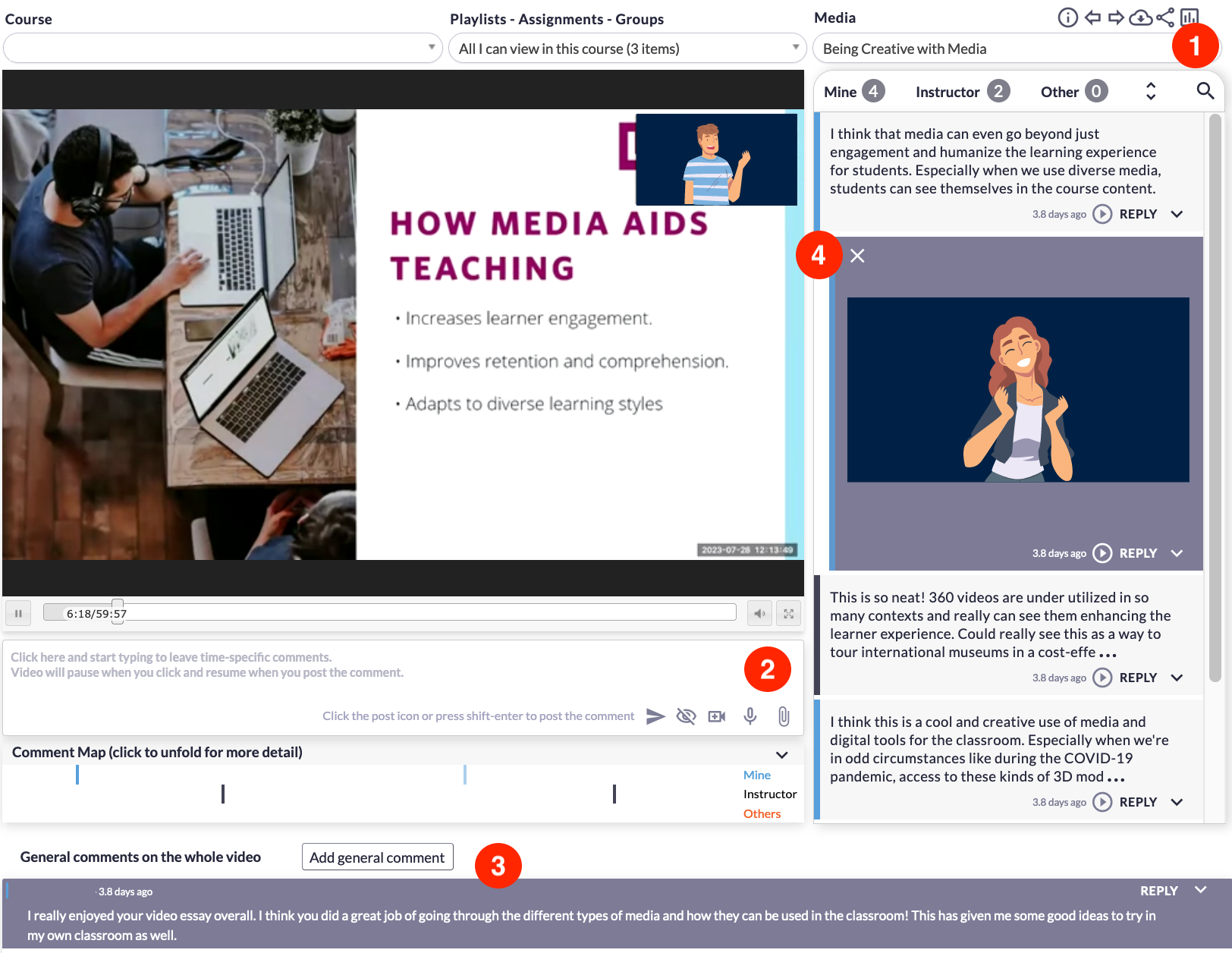Context
This learning design task was to give students a space to share a video essay with their peers and then solicit and provide peer review feedback in the course LLED 540*. The focus was to give students the opportunity to refer to specific details within the piece and engage with the ideas presented in relation to their own practice, provide constructive criticism and holistic feedback. We settled on using CLAS, the Collaborative Learning Annotation System. On CLAS students can upload and host their video essays, share them with a small group of peers, and annotate the video with time-stamped comments in a variety of modalities.
Demonstration
Students log on to CLAS using their CWL and upload their media to their assignment group. Then they can annotate that media by posting timestamped comments on the video. It is advisable to give students some guiding questions to formulate their peer review feedback, to keep it helpful, constructive and relevant.

- Students select their Course, Playlist-Assignments-Groups, and Media from the three drop down menus at the top of the screen to locate the correct document, image or video.
- Students can leave time-stamped comments to discuss specific moments in the video.
- Students can add broad general comments about the video.
- Students can respond to each other’s comments in various modalities. In this example, a video comment has been left.
Pedagogical Pros and Cons
Annotation for peer review allows students to collaboratively and deeply engage with each other’s work. Engaging with video materials with timestamped comments provides an opportunity for depth of analysis unavailable in other online learning environments. Annotating collaboratively for peer review tasks allows for in-depth feedback which can be expanded upon by other peers. CLAS provides students with a secure platform and has some instructions built-in to the interface. Students can provide their feedback in a few different modalities (written, audio or video).
However, peer review on CLAS does come with some unique challenges. Using CLAS adds an extra step for students when submitting work online. Peer review tasks also require students to feel comfortable with sharing their work with their peers and receiving collaborative feedback from multiple sources. Thus, it is critical that the instructor cultivates a sense of community among learners. Instructors should also give guidance on how to provide appropriate feedback. The collaborative aspect of these annotation tasks can be limited depending on group size, time frame and student comfort with the technology. It is also important to note that CLAS has unclear accessibility capacity for users of assistive technologies.
* This assignment has been shared with the permission of Dr. Theresa Rogers.